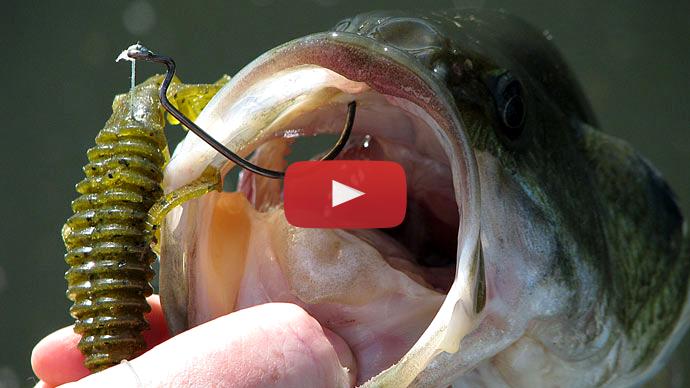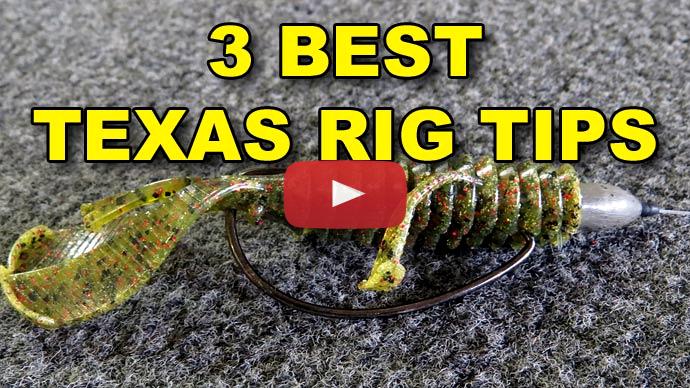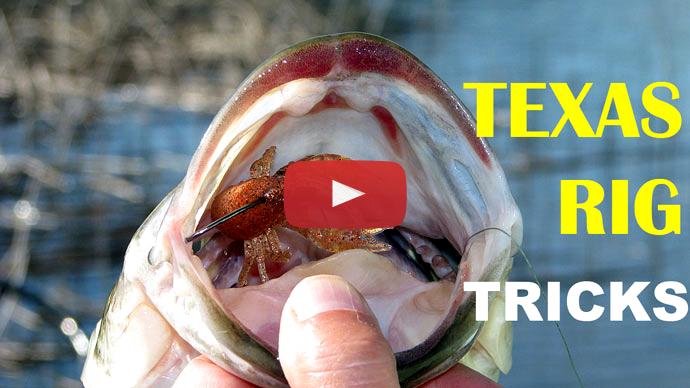Hey folks, Glenn May here with BassResource.com and have you ever been fishing a Texas rig bait, a fish hits it, you set the hook really hard, fight him halfway to the boat, and he just comes right off? Pops off. You bring the lure back to your rod and the hook hasn't even popped out of the bait. What happened? Like, you had a good hook set, right? How come the hook didn't even come out? Well, let me tell you why.
I've explained this in a couple of the videos I've had and there's been a little bit of confusion on that, so I want to dive a little bit deeper into this and exactly what it is. But when you set up on a fish, if you tighten your line down and you're doing that feel feel thing, and then finally you've got a good tight line, you see it swimming off, and pow you set the hook really hard. Well, what happened?
You reeled down, you pulled this bait, the bait's in the fish's mouth. You've pulled it up, right to his lips. And then you set the hook. Well, the bait has nowhere to go. The fish's jaw's really strong. He doesn't want...what he just ate, he doesn't want it to get away. So he's gotta clamp down. Well, the bait has nowhere to go. So what do you do?
You set the hook and it just does this. Nothing happens. It doesn't move. You just move the fish's face. All you've done is moved his head and got him towards you, and now he's fighting because he's got his mouth clamped down on it. You're reeling him back in. All's he has to do is open his mouth and poof. Blow it out. That's what happens. Your hook never comes out.
I see so many guys blame this on, you know, "Oh, it's a wide, extra wide gap hook. That's why." No, no, no, no. It's your hook set.
Here's the thing. Here's how you fix that, guys. When you see that happen, and the line's taking off, don't tighten down to it. Not all the way. Now, this isn't a slack line. I've told people here: you gotta have a little bit of slack in the line to set the hook. But you're not letting the fish swim off with all this line just hanging out. Don't do that. But this happens in an instant. I'm just slowing it down for you.
A fish hits it. He starts to swim off. You gotta reel down to it, but at the last minute, last second, stop reeling but keep the rod going down so there's just a hair slack in there and boom. Pop it. Okay? A couple things happen when you do that.
First of all, this bait is going to be back behind his mouth. It's not gonna be up against it. And then when you set the hook, you're gonna have a little bit of slack in the line. You're gonna get the speed of the rod going. That rod tip'll get moving before it connects with the bait.
So when it hits, now what happens is it...see the shape of that bait? See the shape of that? That weight, right there? Perfect. What it does is now you've popped it really hard and the bait goes through his mouth. It pops it open, uses it as a wedge. Pops open his lips, and now right behind it is that hook. He still has his mouth clamped down on it. There's nothing now to stop it. But that hook that goes right into his jaw. You almost always hook them in the upper part of his jaw, every time you do that. Okay?
Now you're using your equipment. You're using the bait, you're using your rod, to do the work for you. And when you do that, and you pop that lure right on through, you've now got a fish, right in the roof of the mouth. It works every time.
But I wanna make it really clear to you guys, that slack hook set, it happens in an instant. You get...it's basically: if you take a rope or maybe a garden hose and you do that to it, you're throwing in this little bit of slack, a little loop in it, it's just like that. You're dropping your rod and popping it really fast. You don't, like, drop it and wait. You have to whap. It's cracking a whip. That's how you do it. That's how you set the hook, and that's how you stop losing fish. For more tips and tricks like this, visit BassResource.com.



